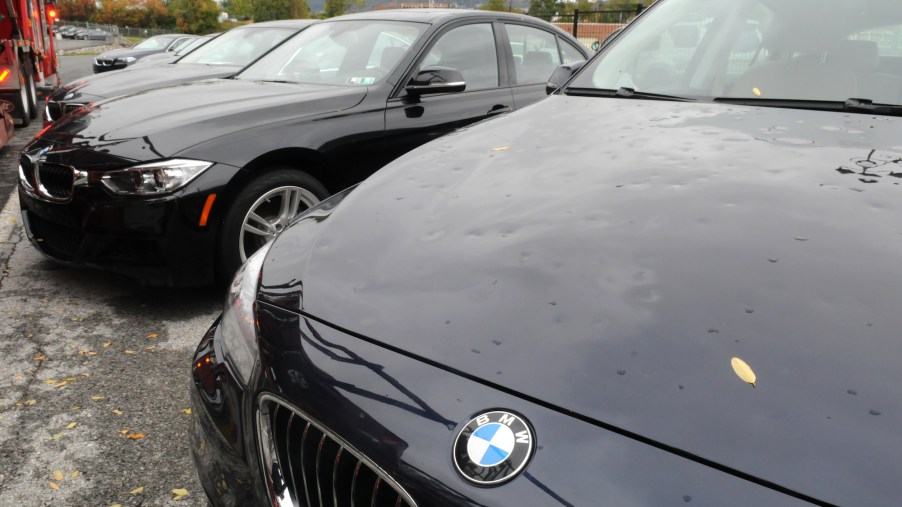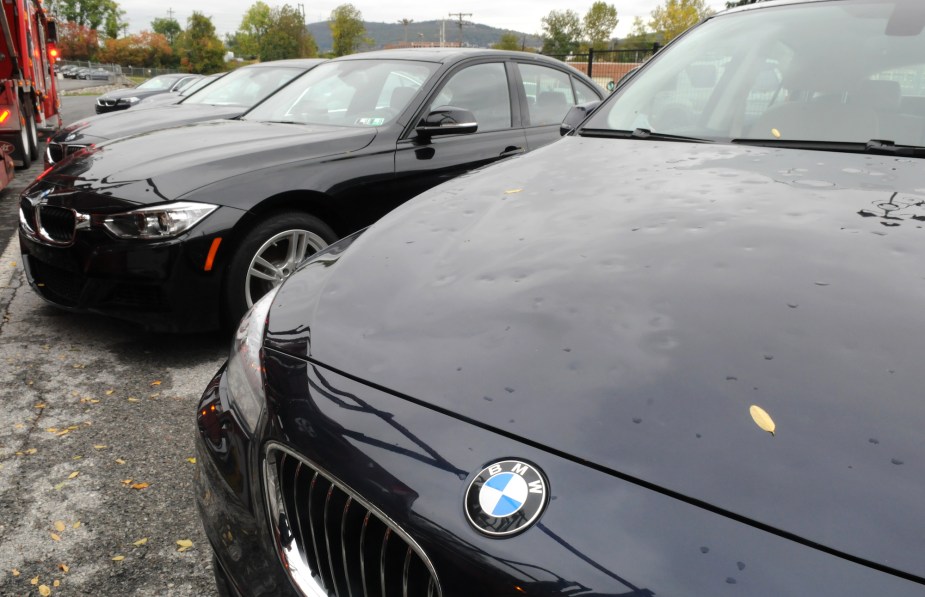
Will Your Car Insurance Cover Hail Damage?
You know the feeling. The clouds start rolling in, and the thunder shifts from slow rumbles to loud cracks. The storm has arrived. Storms can translate to hail if you’re in a part of the country with seasonal temperature fluctuations. Without the right car insurance coverage, you could end up with a hefty repair bill after one of these storms.
Not all storms result in hail. And not all hail will damage your car. But you may be wondering about your insurance and whether or not you’re covered if your vehicle experiences significant damage. Here’s what every auto owner needs to know about car insurance covering hail damage and what you can do to protect your ride during these potentially damaging storms.
What constitutes hail damage?

Ice balls of varying sizes can cause significant damage to your car. The damage you can expect can be just as unpredictable as the hail-producing storm itself. Some insurance claimants have reported paint chips, minor scratches, shattered glass, and significant dents in their cars due to hail.
Typically, when a vehicle owner files a claim for hail damage, an insurance assessor or quality control may want to see proof of the vehicle damage. You may be able to submit photos of your damaged vehicle when setting up your claim or even save time-stamped photos and videos from the storm, showcasing the size of the hail that caused the damage. But you might be in for a costly surprise if you don’t have the right insurance coverage. Not all plans will pay for repairs caused by hail.
Will your insurance cover hail damage?
According to Erie Insurance, car insurance can cover hail damage. However, if you’re only carrying liability coverage, you’ll have to pay for that hail damage out of pocket. The Balance reminds vehicle owners that only comprehensive coverage will reimburse vehicle owners for damage caused by “natural acts” or “acts of nature.”
It’s also important to know that with comprehensive insurance plans, you’ll likely have a deductible to pay or an agreed amount of out-of-pocket costs you’ll cover before the insurance coverage applies. This means if you have minor damage, you might be paying for the repairs as part of your deductible requirement. For car insurance to cover hail damage, you’ll need to be on time with monthly premium payments, securing the plan before the hail damage occurs.
Hail damage costs and prevention
Car Insurance shared that the average hail damage claims in 2020 were $4,300. Other insurance carriers say averages are closer to $2,800. But as you can imagine, your hail damage repair bill will vary depending on the storm’s severity.
Pulling a few dents out of your hood or touching up chipped paint won’t be overly expensive. However, broken glass and warped panels could translate to thousands in repairs, or worse, your insurance provider totaling out your vehicle. In these instances, the damage cost outpaces the car’s value.
If you live where hail storms can happen, you’ll want to ensure you carry comprehensive insurance coverage. But you can also be mindful about protecting yourself and your car during these hails storms to prevent damage. Stay alert about weather conditions so you can park your car in a garage or under cover. And if you find yourself driving when the hail starts falling, consider pulling over under an overpass or into a carwash bay until the hail subsides.
Check your specific insurance policy to make sure you have comprehensive coverage. You can also verify your deductibles. And when the hails storms roll in, do your best to protect your ride so you can avoid hail damage altogether.


